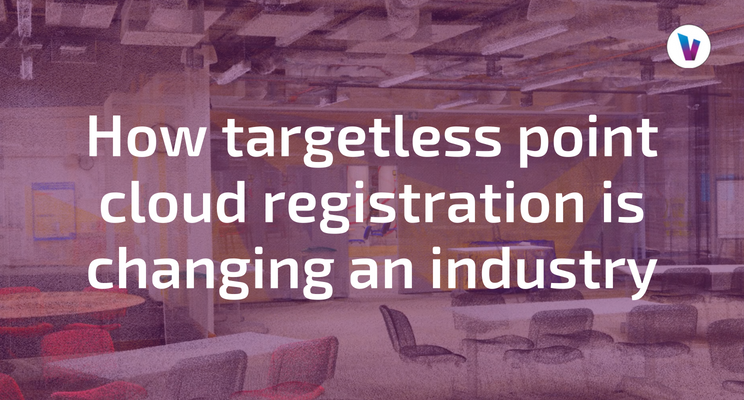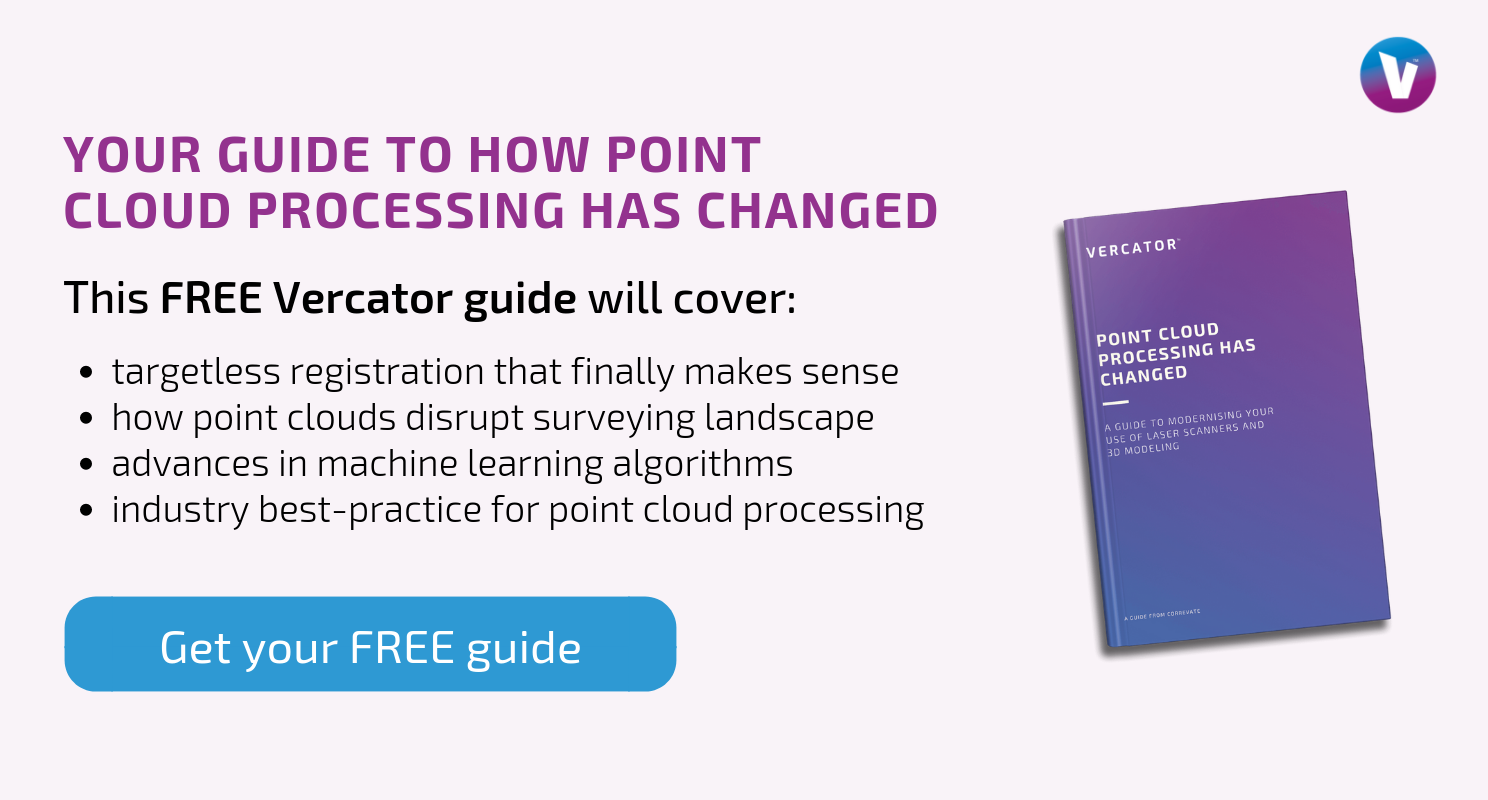How targetless point cloud registration is changing an industry

Is reliance on traditional techniques holding back surveyors?
The cutting edge of precision surveying is targetless registration of point clouds for 3D modelling. This article will discuss how we got here and how advances in technology are creating opportunities for surveyors and the public.
Surveying has come a long way from the ‘peg and rope’ geometry of the Ancient Egyptians and Roman Empire. It wasn’t, however, until the 18th century that surveying experienced its first ‘great leap forward’ with the introduction of optical instruments such as the theodolite. These greatly increased the capable scope of survey projects when used in tandem with triangulation techniques.
The mid 20th century saw the development of truly autonomous range-finding instruments, some of which used reflected electromagnetic waves to measure distance. These were the forebearers of total stations and LiDAR (Light Detection and Ranging). GNSS systems such as GPS changed large-scale surveying forever during the 1980s. However, small devices still play a pivotal role in making more accurate measurements and gauging topography or 3D spaces in urban environments.
Robust LiDAR scanners came into widespread use during the 1990s. These were able to create ‘point clouds’ that represent 3D space with millimetre accuracy. LiDAR scanners have become a staple of engineering projects and surveys of all kinds. These late 20th century developments were seemingly the last dramatic change in surveying. However, we may be in the midst of another revolution right now!
Point cloud registration and targets
While LiDAR brings surveying into hyper-accurate 3D, it can only do so with line-of-sight measurements. In order to accurately map an area, multiple scans are almost always required. This is necessary to gain enough data to create a complete image using downstream processes.
The problem that this has always created is stitching together these multiple scans with the same level of precision and accuracy that is produced in each scan individually. What is needed is a scan ‘registration’ process. Traditionally, this has been done through placing point reducible targets throughout a scene. These are either free-standing spheres or checkerboard surface targets. Through overlapping common targets in adjacent scans, surveyors are able to accurately align scans with immense precision.
This technique has worked remarkably well. It is simple, reliable and repeatable. The problem is that it is slow. Targets have to be manually placed and time must be spent considering how overlap will occur. Particularly in confined urban and interior spaces, making sure that targets are clearly visible in each successive scan makes the entire process laborious and time-consuming.
The targetless future of LiDAR
Being able to scan a scene from multiple angles without the need to place targets is the ‘space age’ dream LiDAR has always seemed capable of delivering. This is now possible under most circumstances.
No one has yet figured out how to reliably produce indoor GNSS positioning. This means that downstream processing of scan data through ‘registration’ is key to 3D imaging. Computational techniques have always been the limiting factor in delivering this through ‘targetless registration’. Time saved in the field was paid for in the office.
Algorithms have long been capable of analysing overlap between two scans and aligning them based on point-by-point similarities. However, this takes much longer than computer-aided alignment based on targets. More problematically, it has always been a human-intensive process. Operators have to input and cross-check search areas for algorithmic feature detection. A targetless, 130 scan point cloud dataset, for example, might take 25 hours to process — 3 days of work with constant oversight.
Terrestrial scanners have not changed. But, algorithm advances have almost entirely removed this issue of time spent processing from consideration. Through the use of vector-based spherical analysis, processing programs are now able to rapidly achieve rotational alignment between scans. This enables them to proceed to 2D point density comparisons for vertical and horizontal alignment.
Splitting the process apart in this way drastically increases the speed at which alignments are possible — cutting processing time by 40%-90%. Critically, this speed of analysis allows for algorithmic comparison of every point between two scans — removing the need to input search area parameters and, therefore, the need for most human oversight! Scans can be queued for hands-off processing.
What has been delivered is an automated procedure for processing targetless point cloud. This has removed the need to weigh time saved in the field against time saved in the office, and delivered a simpler and more automated process across the board. Alignment accuracy and precision is maintained under most circumstances and achieved through comparing the datasets as a whole rather than 3-4 targets. This change is revolutionising both the types of 3D models surveyors are able to produce, and the processes by which surveys are undertaken.
Summary: Targetless scanning is opening opportunities for LiDAR application through making point cloud creation easier
These changes are new and have yet to fully impact the surveying community. However, the opportunities are large. Without the need to place targets, scans can be done faster and more easily. Removing the need to oversee significant parts of the alignment and processing procedure greatly reduces the number of ‘work-hours’ required to produce 3D models — reducing the cost. This opens opportunities for small businesses and individuals to more dynamically engage with 3D modelling — both as users and producers. When these new techniques are fully embraced, they will open up opportunities for surveyors and the public in ways still unimagined. LiDAR is on track to join the many technologies that have entered daily public use due to increased accessibility through decreased cost and simplification of use.
Tags: targetless registration

